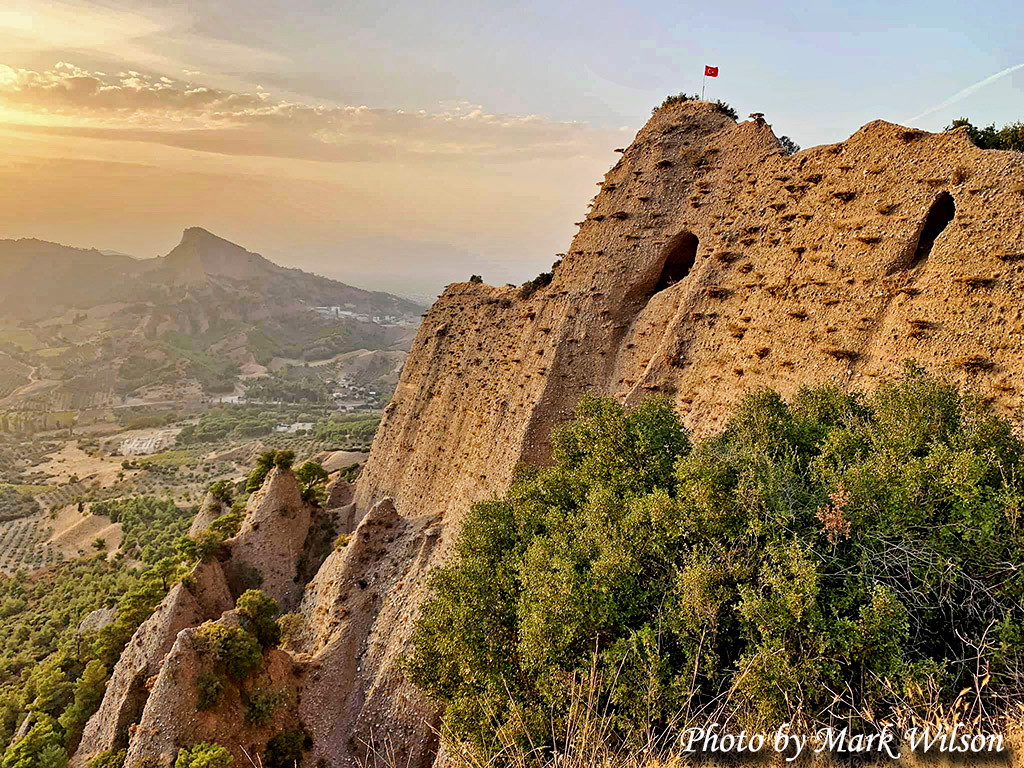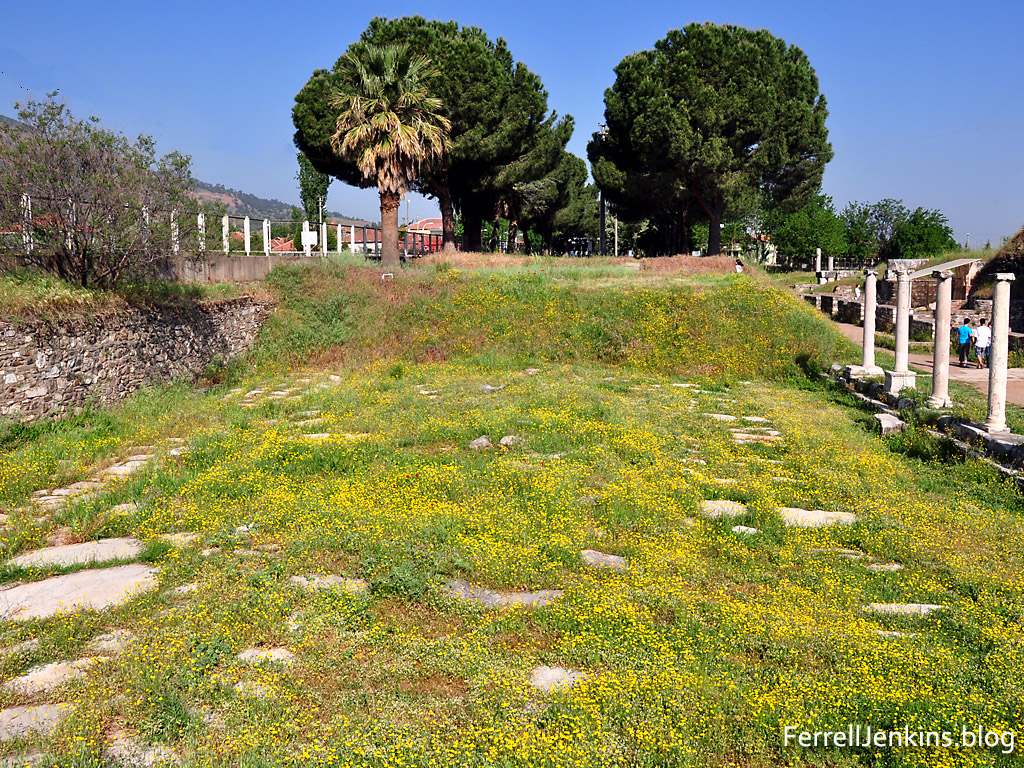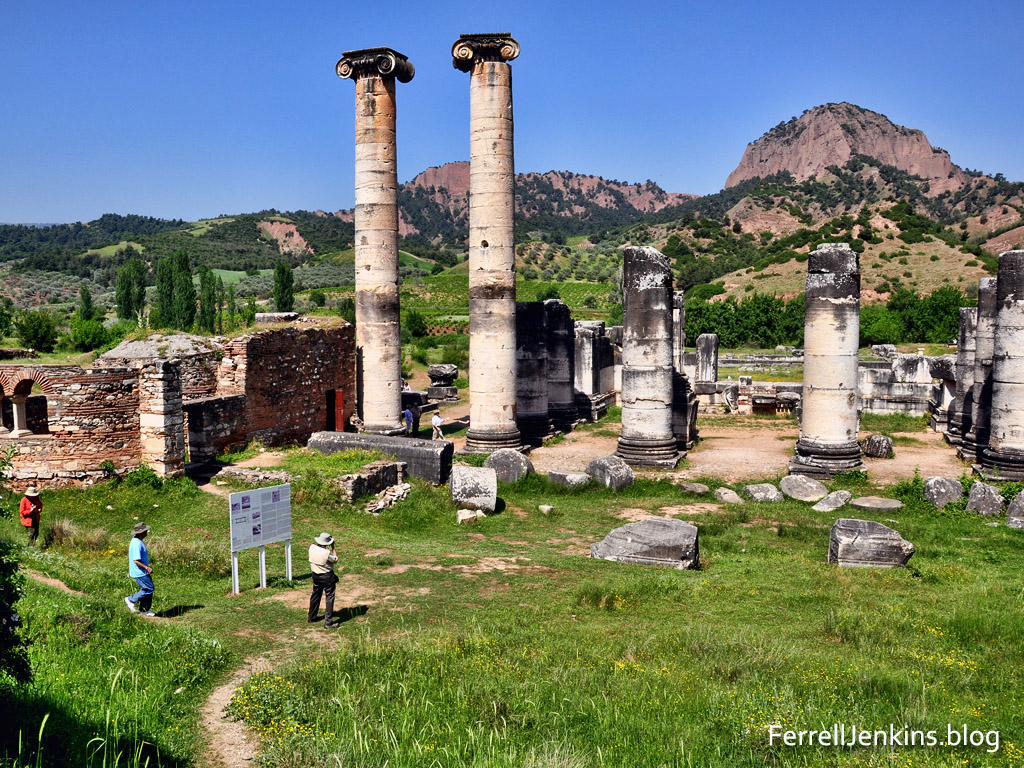The city of Sardis is located on the banks of the Pactolus river in the Hermus Valley remained important for many centuries. The river may not look very impressive when compared to the Euphrates, the Thames or the Mississippi but its importance lies in the fact that it was panned for gold. The Lydians lived here as early as the 13th century B.C. and were the first to mint coins of gold in the 7th century B.C. The last and most famous king of the Lydians was Croesus (560-546 B.C.). King Croesus gave his name to the Greek language to the precious metal refined at the site (chrusos).
Later the Persians traveled through Sardis. In fact, the Royal Road that ran through the city was used by the famous Persian post. It is no wonder that Alexander the Great came to Sardis.
In The Campaigns of Alexander, Arrian records the visit of the Macedonian warrior to Sardis. He says that when Alexander came to Sardis he agreed to exact the same tribute which they had paid to the Persian king Darius. He determined to build a temple to Zeus at the same place where the palaces of the Lydian kings had stood.
Leaving Sardis under the control of his officers Alexander continued to Ephesus, arriving there on the fourth day.
The Problems in the Church at Sardis
There seem to be two problems mentioned in the letter to the church at Sardis. The edict to the church begins,
“And to the angel of the church in Sardis write: ‘The words of him who has the seven spirits of God and the seven stars. “‘I know your works. You have the reputation of being alive, but you are dead. Wake up, and strengthen what remains and is about to die, for I have not found your works complete in the sight of my God.” (Rev. 3:1-2 ESV)
The church had a reputation for being alive but they were dead and none of their works has been completed.
The saints at Sardis needed constantly to be watching. Wake up or else! The Lord will come like a thief and catch them unprepared. This warning would have special meaning to a city which had been caught off guard on at least two important occasions. The city was located in the Hermas Valley on the banks of the Pactolus River (a tributary to the Hermas). The acropolis of the city was built on a spur of Mount Tmolus about 1500 feet above the plain. Mount Tmolus is 5,800 feet high. The acropolis was difficult to reach and was considered unassailable by an enemy. The city spread until it soon had an upper city and a lower city.
In 546 BC the Lydian king Croesus and city of Sardis fell to Cyrus and the Persians. Remember the attitude of the Sardians that the fortress city was unassailable. Herodotus (Book I) tells the story of the fall. The Persians were in the valley below the citadel. A Lydian soldier dropped his helmet over the city wall and scurried down the rock to get it. A Persian carefully marked this in his memory and afterward scaled the city wall, with other soldiers, to capture the city for Cyrus. Croesus was taken prisoner. The confident city had fallen.
In 334 BC Sardis surrendered willingly to Alexander the Great. The city became the administrative center for the Seleucid Dynasty. In 214 BC the city fell to Antiochus Epiphanes through the use of tactics almost identical to those which caused its fall to the Persians more than three centuries earlier. The admonition to watch finds parallel in the teaching of Jesus (Matthew 24:42-43; 25: 13; Luke 12:39; cf. 1 Thessalonians 5:2). We must be on watch at our weak point, and at our strongest point. We need to be especially careful if we say, “that’s the one thing I would never do.”

The city that thought it was secure was actually vulnerable to the attacking enemies. The letters to the seven churches are replete with allusions to local customs and history. We see this in the letter to Sardis. Too many churches of our own time rely on their past achievements of famous meetings, well known preachers, big crowds, or numerous conversions. They started great projects, first ever, annual this or that, but they never finished them. Think about this on a personal basis also.
The problems faced by the Seven Churches of the Book of Revelation are the same or similar to those faced by churches today. Let us listen and learn.
A personal note to our readers: This short series of lessons was begun last November. A brief word of explanation about the delay in completing them might seem appropriate. My wife of 66 years has been dealing with dementia, medically diagnosed by her neurologist as Alzheimer’s Disease, since 2013. This has not been an easy road for her or the man who promised to love her in sickness and in health. Our doctors told me long ago that I would not be able to care for her on my on, but I did so as long as possible. In mid-April we moved her to a nearby assisted living memory care center. She has adapted well but my work is not complete. This task as caregiver still requires a considerable amount of time and your interest in our well being is appreciated.


















You must be logged in to post a comment.